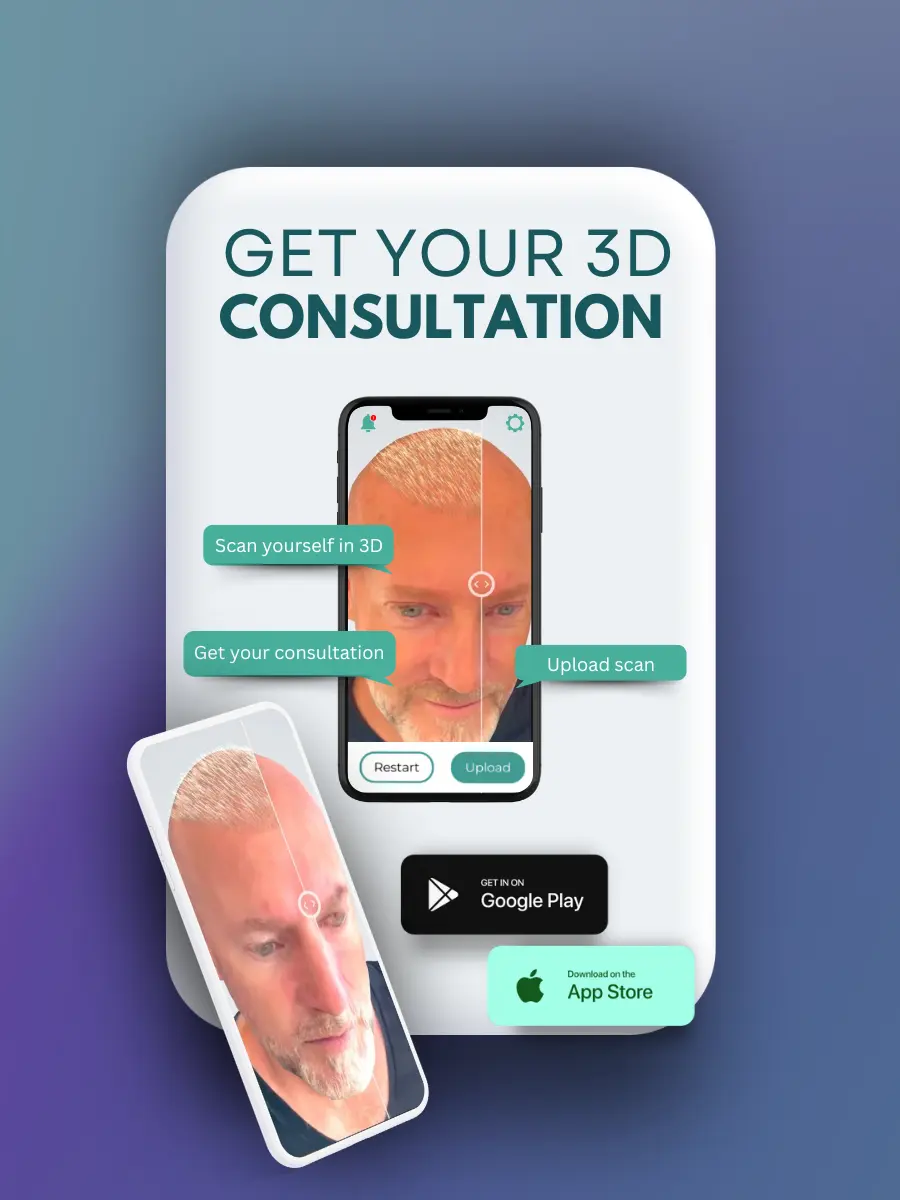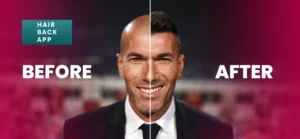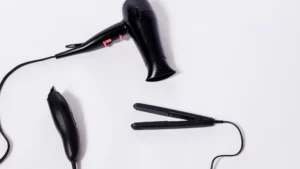Hair loss affects millions of individuals worldwide, transcending age, gender, and cultural boundaries. Whether it’s thinning hairlines or noticeable bald patches, the impact of hair loss extends far beyond physical appearance, often affecting self-esteem and emotional well-being.
In the quest to have a lasting solution to hair loss, Platelet-Rich Plasma (PRP) hair loss therapy has been earmarked to be a promising hair loss treatment.
My name is Emma Wright, your resident hair loss and restoration specialist. This comprehensive guide explores the potential of PRP therapy. Its mechanism, efficacy, and suitability for individual hair losses will be unraveled.
By dissecting the intricacies of the PRP procedure, we aim to equip readers with the knowledge needed to make informed decisions about their hair restoration journey. Join us as we unravel the potential of PRP therapy in the battle against hair loss, offering hope and insights to those seeking viable solutions.
What is PRP Hair Loss Therapy?
Platelet-rich plasma (PRP) therapy is a revolutionary medical procedure that utilizes the healing properties of platelets found in the patient’s own blood to stimulate tissue repair and regeneration.
PRP therapy involves the extraction of a small sample of the patient’s blood, typically from the arm. The blood sample is then processed using a centrifuge to separate the different components, including red blood cells, white blood cells, plasma, and platelets.
The resulting solution, known as platelet-rich plasma, contains a high concentration of platelets suspended in plasma
Components of PRP Hair Loss Treatment
- Platelets: Tiny blood cells responsible for clotting and wound healing. They contain numerous growth factors and cytokines, such as platelet-derived growth factor (PDGF), transforming growth factor-beta (TGF-beta), and vascular endothelial growth factor (VEGF), which play pivotal roles in tissue repair and regeneration.
- Plasma: The liquid component of blood that suspends the platelets and other blood cells. Plasma contains proteins, electrolytes, hormones, and nutrients essential for cellular function and tissue repair.
- Buffy Coat: The layer rich in platelets that form after centrifugation, containing the concentrated platelet-rich plasma.
How Does PRP Hair Loss Therapy Work?
Platelet-rich plasma (PRP) therapy operates on the principle of harnessing the body’s innate healing mechanisms to stimulate tissue repair and regeneration. The process begins with the extraction of a small sample of the patient’s blood, typically from the arm.
This blood sample is then subjected to centrifugation, a process that separates its components based on density.
During centrifugation, the blood sample spins at high speeds, causing the heavier components, such as red blood cells, to settle at the bottom of the tube, while the lighter components, including plasma and platelets, rise to the top.
The resulting solution contains a concentrated mix of platelets suspended in plasma, known as platelet-rich plasma or PRP. Platelets are small, disc-shaped blood cells that play a crucial role in the body’s natural healing processes.
For hair loss treatment, PRP therapy capitalizes on the regenerative potential of platelets to rejuvenate dormant hair follicles and promote hair growth. When PRP is injected directly into the scalp, it delivers a concentrated dose of growth factors and cytokines to the hair follicles in the target area.
Upon injection, the growth factors and cytokines released by the platelets initiate a cascade of biological processes within the scalp tissue. One key mechanism involves the stimulation of dermal papilla cells, which are located at the base of hair follicles and play a crucial role in regulating hair growth cycles.
By activating dermal papilla cells, PRP therapy promotes the proliferation of hair follicle stem cells and prolongs the anagen (growth) phase of the hair growth cycle. This results in increased hair density, thickness, and overall hair quality.
Importance of PRP Hair Loss Therapy
Beyond helping with hair regeneration and growth, Platelet-rich plasma has some other benefits. Below are some of the benefits;
- PRP therapy enhances blood circulation to the scalp, delivering oxygen, nutrients, and growth factors to the hair follicles.
- Improved blood flow nourishes the follicles, maintains their vitality, and supports the growth of healthy hair.
- It has been proven to reduce inflammation and oxidative stress in the scalp tissue, creating a more favorable environment for hair follicle regeneration.
Overall, PRP therapy offers a natural and minimally invasive approach to hair loss treatment, with the potential to yield significant improvements in hair density, thickness, and overall hair quality.
By harnessing the regenerative power of platelets and their associated growth factors, PRP therapy holds promise as a safe and effective solution for individuals struggling with hair loss.

Who is a Suitable Candidate for PRP Hair Loss Therapy?
Platelet-rich plasma (PRP) therapy holds promise as a hair loss treatment, but not everyone is an ideal candidate. Understanding the eligibility criteria, factors influencing treatment success, and potential risks and side effects is essential for determining suitability.
Eligibility Criteria
PRP therapy may be suitable for individuals experiencing various forms of hair loss, including androgenetic alopecia (male and female pattern baldness), alopecia areata, and certain cases of telogen effluvium.
However, eligibility depends on several factors, including:
- Severity of hair loss: PRP hair loss therapy is typically most effective for individuals in the early stages of hair loss or those with mild to moderate hair thinning.
- Overall health: Candidates should be in good general health, with no underlying medical conditions that could interfere with the healing process.
- Realistic expectations: Candidates should have realistic expectations about the outcomes of PRP hair loss therapy, understanding that results may vary from person to person.
Factors Influencing PRP Hair Loss Treatment Success
Several factors can influence the success of PRP therapy for hair loss treatment, including:
- Age: Younger individuals with a higher density of hair follicles may respond better to PRP therapy.
- Cause of hair loss: PRP therapy tends to be most effective for individuals with hair loss caused by factors such as genetics (androgenetic alopecia) or hormonal imbalances.
- Treatment protocol: The number and frequency of PRP treatment sessions, as well as the technique used for injection, can impact treatment outcomes.
- Adherence to post-treatment care: Following post-treatment instructions, such as avoiding certain hair care products and activities, can enhance the effectiveness of PRP therapy. The basic tip to avoid any allergies is to know the things to avoid after hair loss treatment.
PRP Hair Loss Treatment Potential Risks and Side Effects
While PRP hair loss therapy is generally considered safe, it’s essential to be aware of potential risks and side effects, including:
- Pain or discomfort at the injection site: Some individuals may experience temporary discomfort or soreness at the site of PRP injections.
- Risk of infection: As with any injection-based procedure, there is a slight risk of infection at the injection site. However, this risk is minimal when PRP therapy is performed under sterile conditions by a qualified healthcare provider.
- Bruising or swelling: Mild bruising or swelling at the injection site may occur but typically resolves within a few days.
- Allergic reactions: While rare, some individuals may experience allergic reactions to components of the PRP solution or the anticoagulant used during blood collection.
Conclusion
If you’re considering PRP hair loss therapy for hair loss, take heart in the growing body of evidence supporting its effectiveness and safety. Consultation with a qualified healthcare provider can help you determine whether PRP hair loss therapy is the right option for you based on your unique needs and circumstances.
Remember that patience is key, as results may take time to manifest. With proper adherence to treatment protocols and post-treatment care, PRP hair loss therapy holds the potential to rejuvenate your hair and restore your confidence.
In conclusion, whether you’re just beginning to notice signs of hair loss or have been grappling with it for some time, PRP therapy represents a beacon of hope in the journey toward hair restoration.
With its ability to harness the body’s own healing mechanisms, PRP hair loss therapy offers not just a treatment but a pathway to renewed self-assurance and vitality. Embrace the possibilities, and take the first step toward a fuller, healthier head of hair with PRP therapy.














